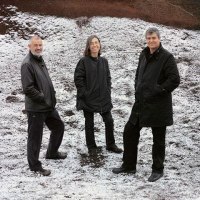There was no possibility of lighting many of the spaces inside the building naturally because the building is semi-buried, but we wanted to maintain the feeling of being underground by incorporating lighting from the ground, which, together with natural light, In some of the spaces, it generates a scenography of volumes and perspectives that evoke Egyptian temples.
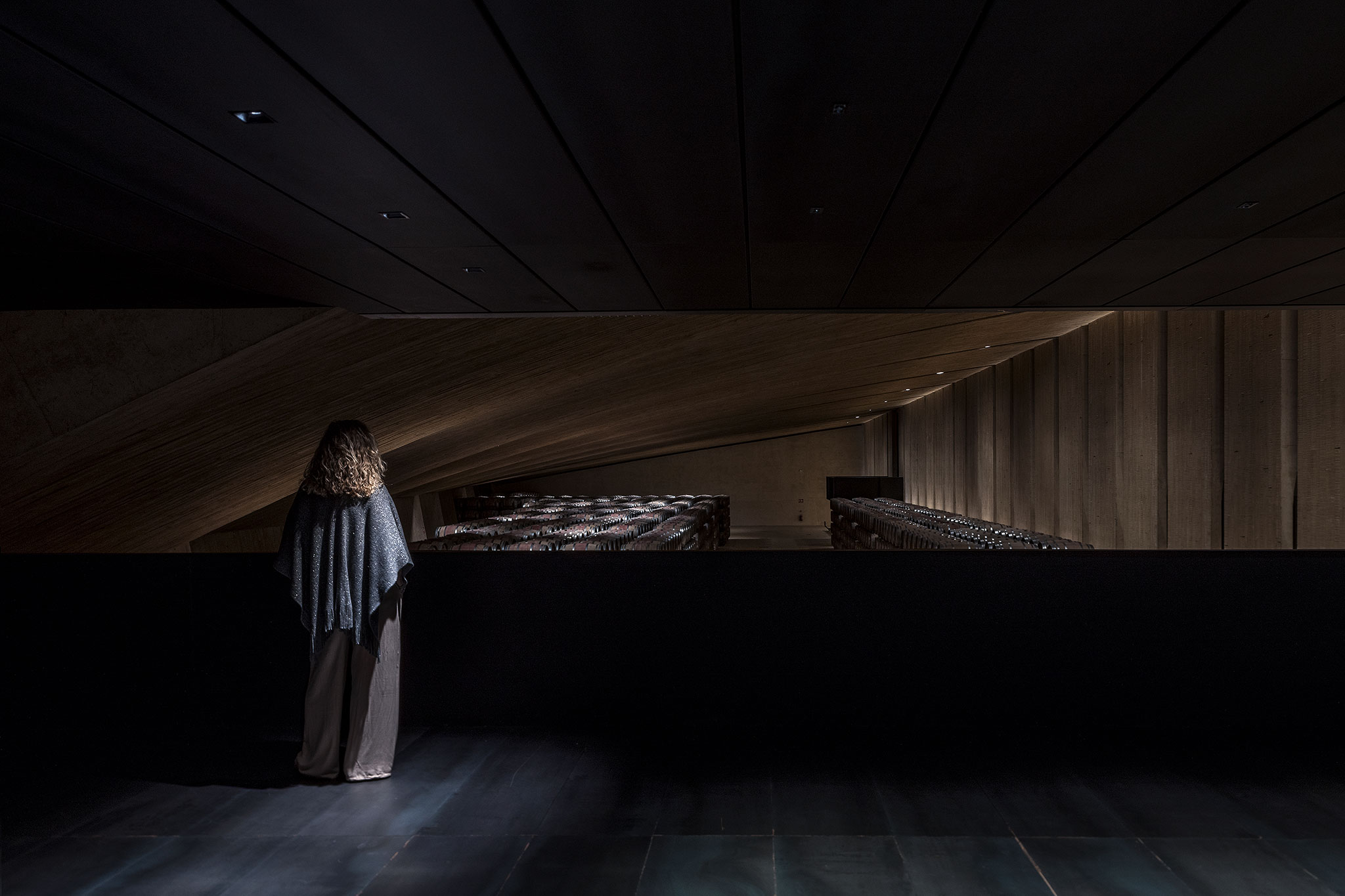
New Perelada Winery by RCR Architects. Photograph by Pep Sau.
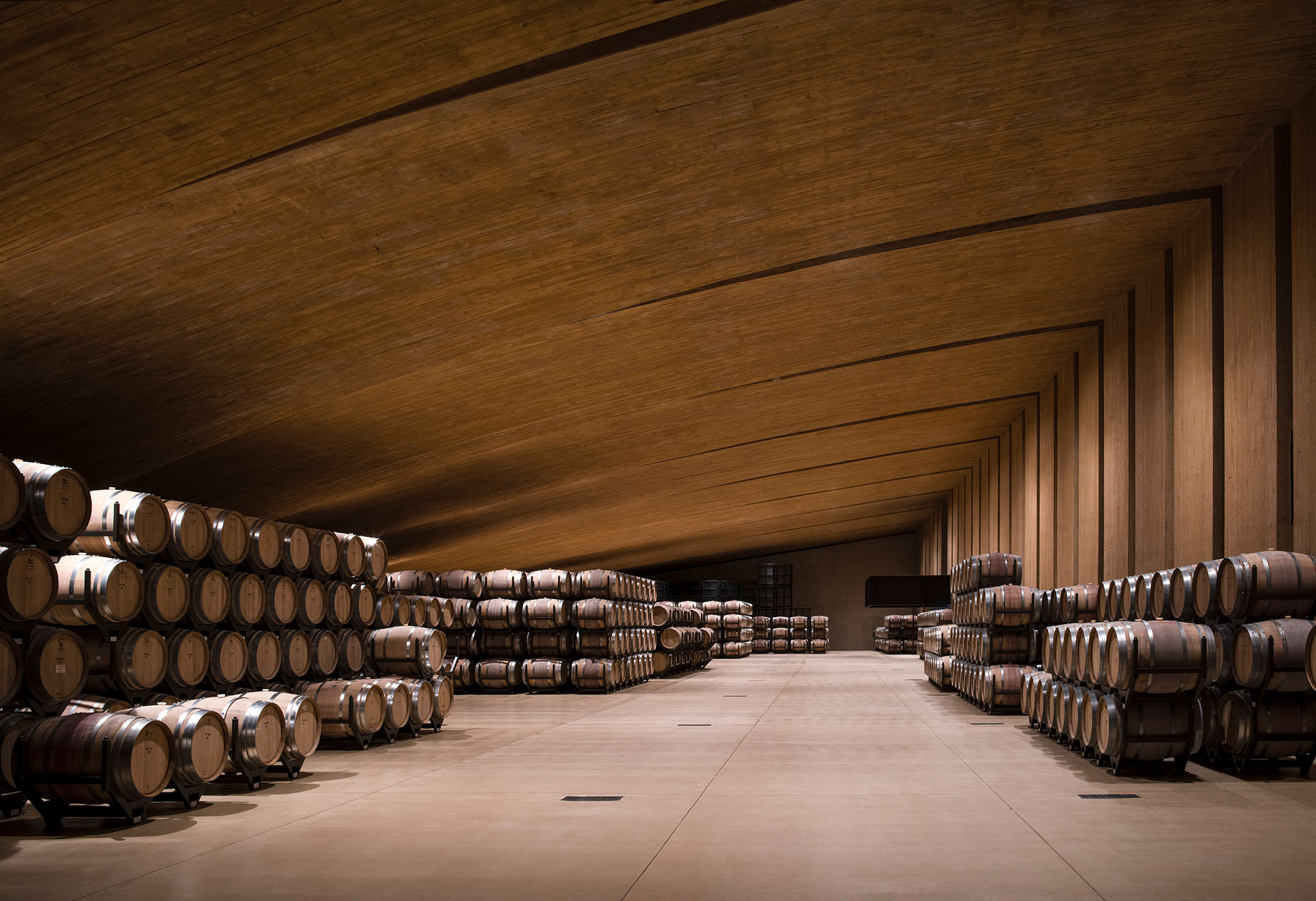
New Perelada Winery by RCR Architects. Photograph by Hisao Suzuki.
Project description by RCR Architects
The new Grupo Perelada winery has been designed by RCR Arquitectos in harmonious integration with the environment, and the lighting project, natural and artificial, has been designed with the same objective: Light, architecture and oenology to delight.
One of the challenges in the new warehouse was to take advantage of natural light, to be able to work with sunlight ten meters underground, in the tank area, reaching 200 lux in the workplace despite being an underground construction. . To achieve this, a study of natural light was carried out to adapt the lighting proposal according to the coordinates of the geographical location. Adjustments to the architectural design of the skylights were also proposed. It was proposed that all natural light entries be flared slots, like windows in Romanesque temples, to achieve maximum natural light entry. A more translucent glass was also proposed so that the light entered softly, without generating shadows in the work areas. Natural light sensors turn on the luminaires regulated by the Dali protocol when the levels drop below 200 lux.
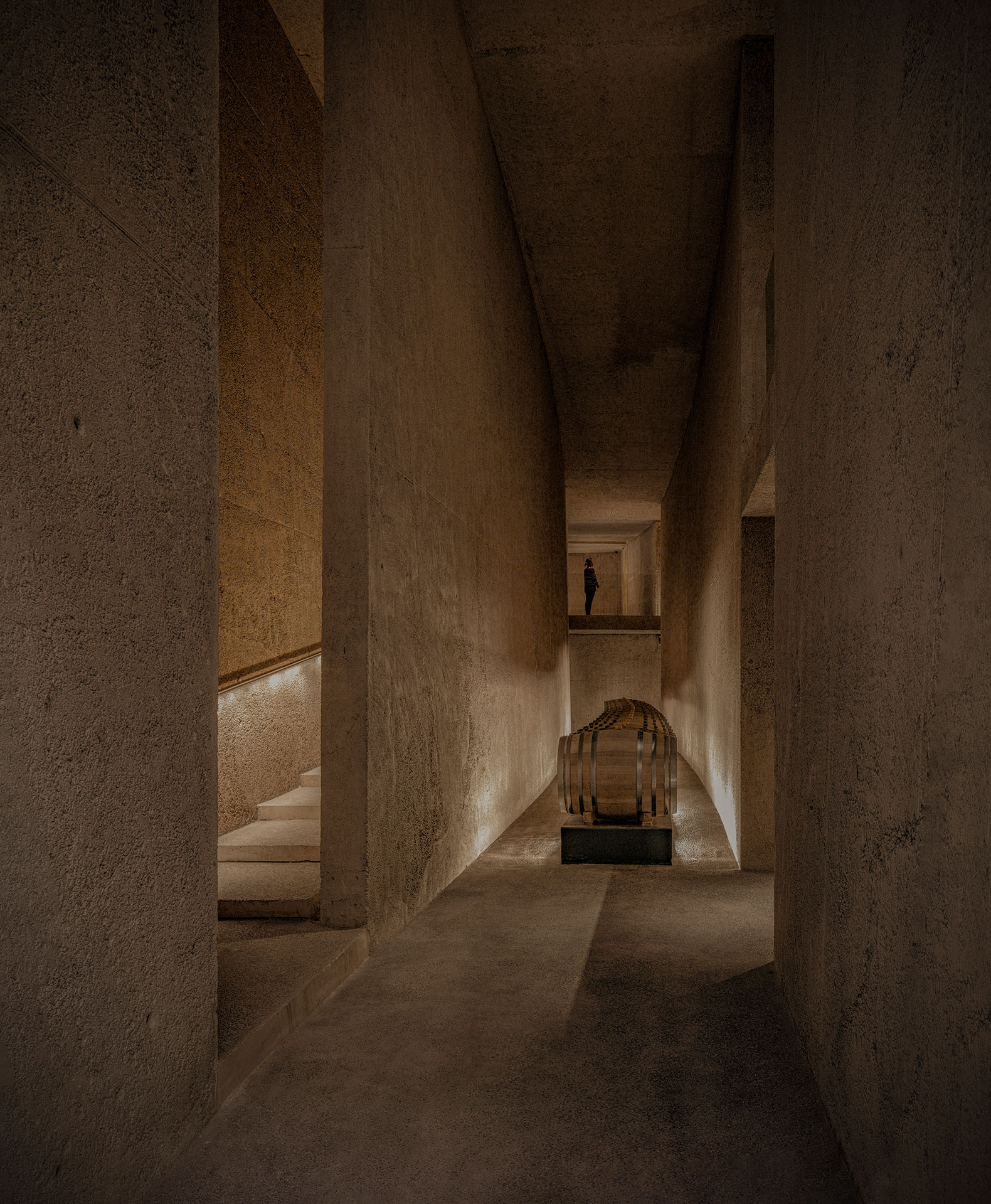
New Perelada Winery by RCR Architects. Photograph by Hisao Suzuki.
Another challenge was to integrate the lighting systems so that they would go unnoticed, so that the artificial light would enhance the architecture and content of the winery, providing a high quality of expression and comfort in spaces that did not have natural light. Artificial light is incorporated into the flared slots so that the luminaires go unnoticed, generating the perception that the origin of natural light is the same as that of artificial light. This arrangement is complemented in certain areas with linear lighting integrated in detail into the floor so that the relationship between the wine and the land can be felt, allegorically, in the spaces.
The liturgy of the visit begins through El Laberinto, a tour of projections that explain the concept of wine at the Perelada wineries. The light emerges from the ground and accompanies us with the sensation of being underground giving life to the route, like the roots to the vines. The hallway that leads to the bottle rack is a composition of lights and shadows generated by the vertical openings of the architecture itself, and in the room called “Temple” the natural and artificial light generate a scenography of volumes and perspectives that evoke Egyptian temples. .
The barrel area is shown to us through the light that bathes the vertical concrete slats or steles and the ceiling and introduces us to the nobility and greatness of the wine.
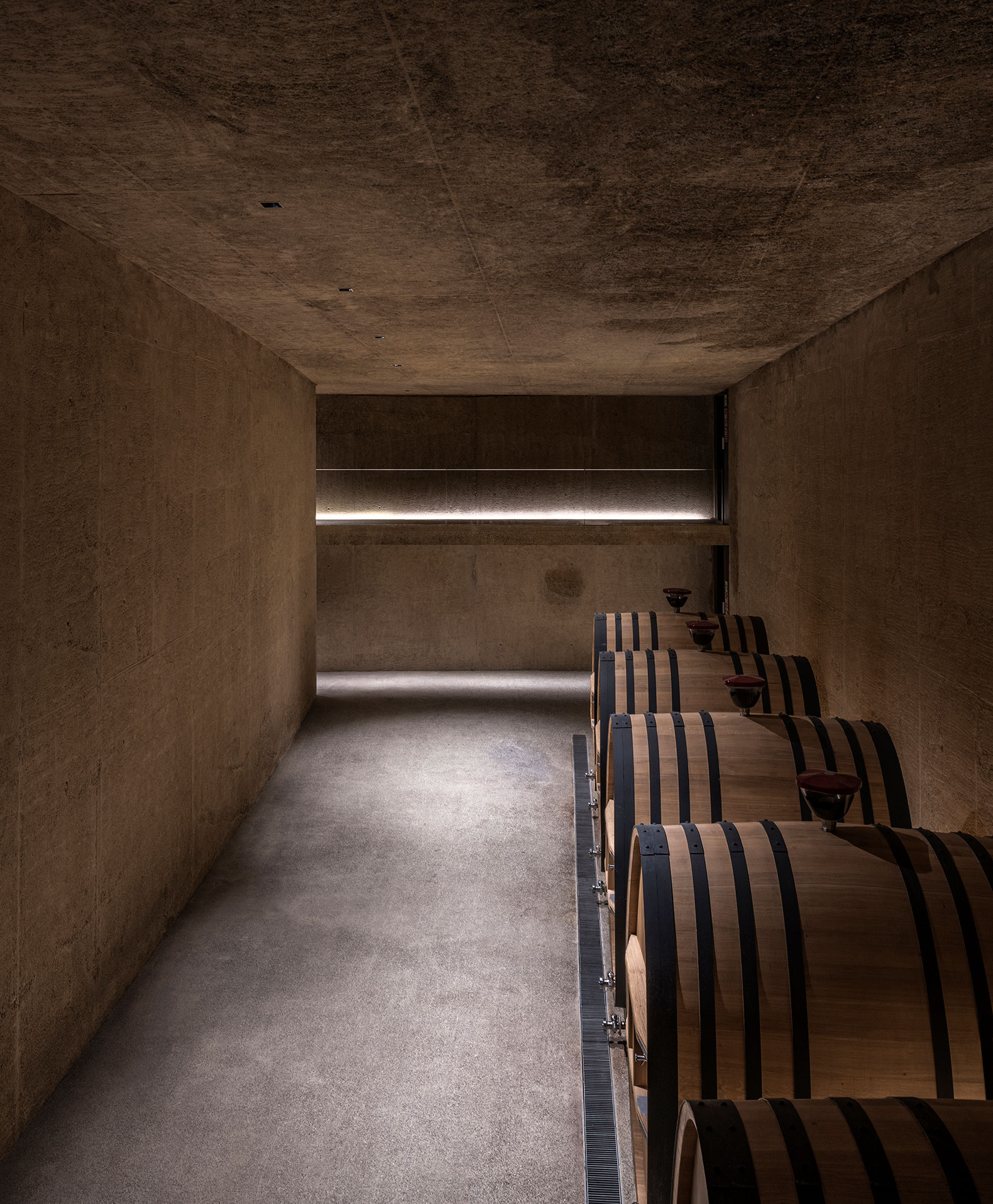
New Perelada Winery by RCR Architects. Photograph by Pep Sau.
The lighting control allows each space to be adapted to the light it needs at each moment of the journey.
In terms of sustainability, the new Perelada winery is a pioneer in Europe in obtaining LEED Gold certification for its minimal impact on the environment. At a lighting level, very low consumption lighting is proposed that favors maximum use of natural light through the roof. Likewise, 100% of electrical consumption corresponds to certified renewable energy.
Artec Studio's lighting project for the New Perelada Winery has been awarded an IALD Awards of Excellence 2023 and a LIT Award 2022.

























